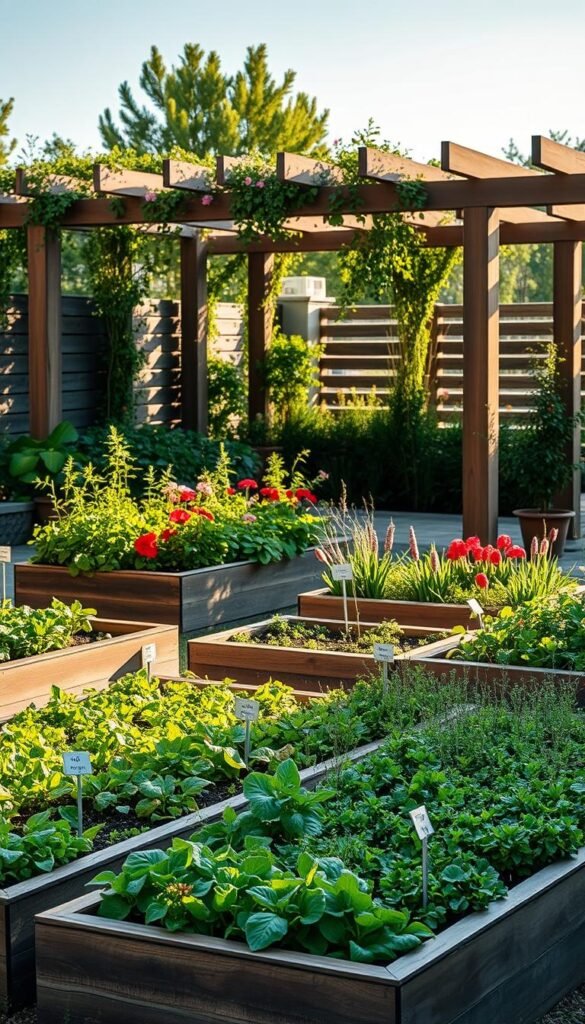Want to turn your outdoor area into a vibrant, productive oasis? Elevating your planting spaces offers a fresh way to grow fresh produce and flowers while adding character to your property. These structured setups let you control soil quality, reduce weeds, and create eye-catching layouts that match your personal taste.
Why are so many homeowners choosing this approach? For starters, it simplifies maintenance and boosts yields. You’ll spend less time bending over and more time enjoying your harvest. Better drainage and fewer pests are just the beginning of the perks.
Customization is where these systems shine. Whether you’re working with a small patio or a sprawling lawn, you can tailor the size, shape, and materials to fit your vision. Think curved edges for softness, tiered levels for drama, or sleek modern lines for contemporary appeal.
The magic happens when practicality meets beauty. Imagine crisp vegetables thriving next to fragrant herbs and colorful blooms—all organized in a way that looks intentional. With smart planning, your growing space becomes a living artwork that feeds both your family and your sense of pride.
Introduction to Raised Bed Garden Design
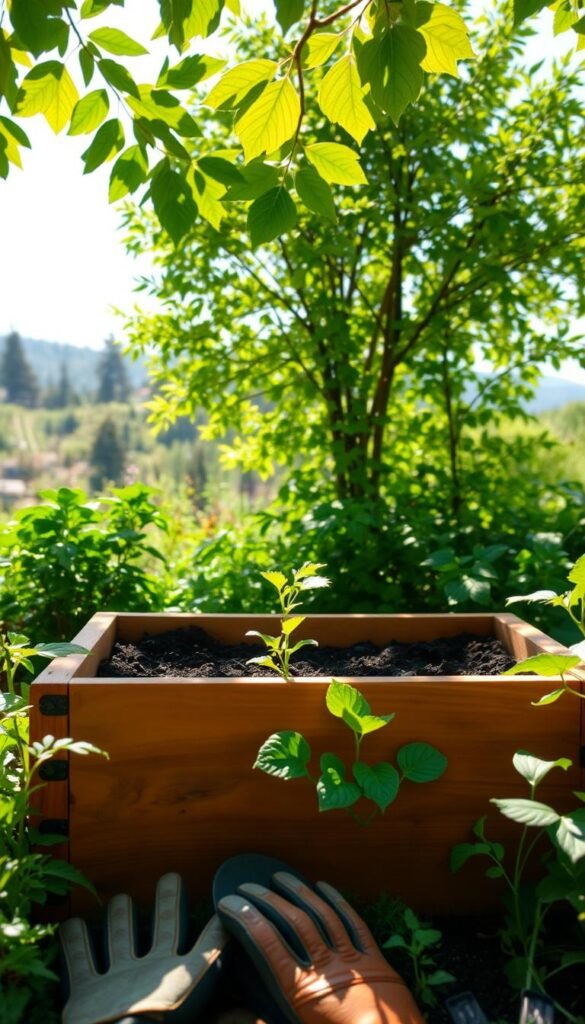
Elevated growing spaces offer a fresh take on cultivating plants at home. Unlike traditional plots, these systems lift soil above ground level, creating contained environments where you manage every detail. This method works for veggies, herbs, or flowers—and adapts to tight patios or large backyards.
Why choose this approach? Three key benefits stand out:
- Faster soil warming in spring
- Reduced compaction from foot traffic
- Customizable layouts that fit your space
You’ll notice better drainage since excess water flows freely through loose, nutrient-rich soil. Root crops like carrots thrive in these conditions, while leafy greens grow faster. For those with limited mobility, height adjustments make tending plants easier than kneeling on the ground.
Thinking about building your own? Our step-by-step tutorial simplifies the process. Start small with a 4×4-foot box, then expand as your confidence grows. Match materials to your home’s exterior—cedar for rustic charm or galvanized steel for modern flair.
Smart planning prevents overcrowding and ensures sunlight reaches every plant. Sketch your layout first, leaving space for pathways. Remember: good design balances beauty with practicality, turning functional spaces into outdoor showcases.
Exploring the Benefits of Raised Garden Beds
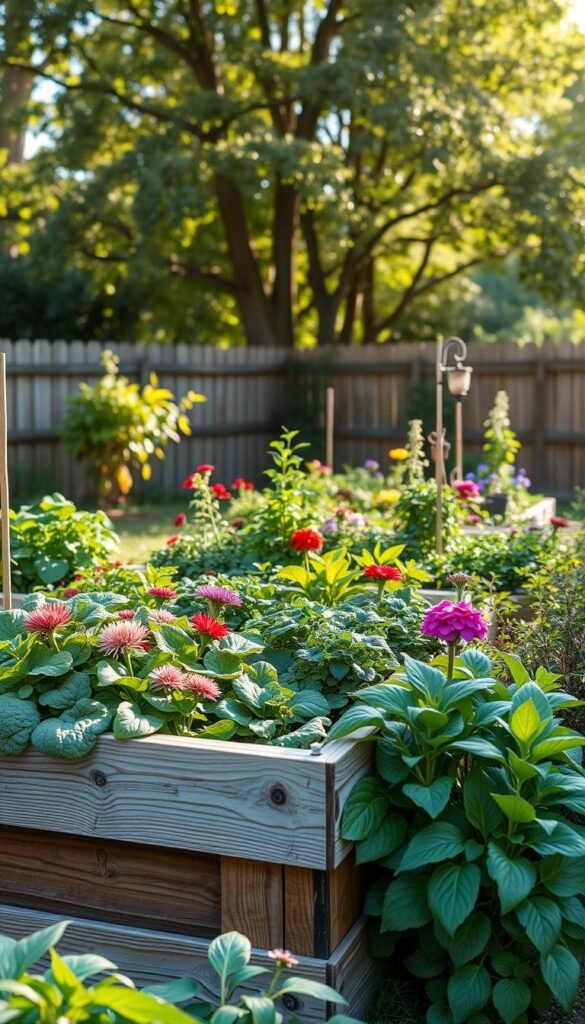
Imagine a garden where water never pools around your tomatoes after heavy rain. Elevated planters solve this common frustration through built-in drainage. Loose, well-aerated soil lets roots breathe while preventing rot – a game-changer for crops like peppers and herbs.
You control what goes into your growing medium. Mix compost, sand, and organic matter to create ideal conditions for blueberries (acidic) or carrots (loamy). No more battling heavy clay or rocky earth that stunts growth.
Comfort matters when tending your greens. These systems let you work at waist height instead of kneeling. One gardener shared: “After hip surgery, I thought I’d quit growing veggies. Now I harvest kale pain-free!”
Your plants get a head start each spring. Soil in contained spaces warms faster than ground plots, letting you sow seeds weeks earlier. Add row covers in fall to protect greens from frost – enjoy fresh salads into November.
Small yards become productive powerhouses. Grow vertical crops like beans on trellises beside bush varieties. Smart layouts prevent overcrowding, so zucchini leaves don’t shade your basil. Fewer weeds mean less work, while raised sides deter slugs and rabbits.
Raised Bed Garden Design: Combining Function and Style in Your Yard
Great outdoor spaces marry visual charm with purposeful layouts. Start by selecting materials that echo your home’s character—weathered wood for cottage vibes or sleek metal for urban settings. One homeowner transformed their bland backyard using stone-edged planters that mirrored their patio’s retaining walls.
Color coordination creates harmony. Paint cedar boxes to match your front door or choose terracotta pots that complement brickwork. These subtle connections make your growing areas feel intentional rather than tacked-on. Remember: contrast adds drama too—try dark-stained beds against light gravel paths.
Vary heights and shapes to guide the eye. A staggered layout with low herb boxes beside tall trellises gives depth. Mix leafy kale with spiky lavender or feathery dill for textural play. As seasons change, swap cool-weather pansies for summer’s zinnias to maintain color bursts.
Smart placement boosts curb appeal. Frame entryways with symmetrical planters or use curved beds to soften angular architecture. One study showed homes with cohesive landscape design sold 5-15% faster than others. For more ideas on blending form and function, explore our guide to elevating your space’s visual appeal.
Your outdoor area should work as hard as it impresses. Deep beds accommodate carrots while shallow ones host strawberries—all within steps of your kitchen. When every element serves dual purposes, you create spaces that nourish both body and spirit.
Maximizing Your Garden Beds with Ergonomic Design
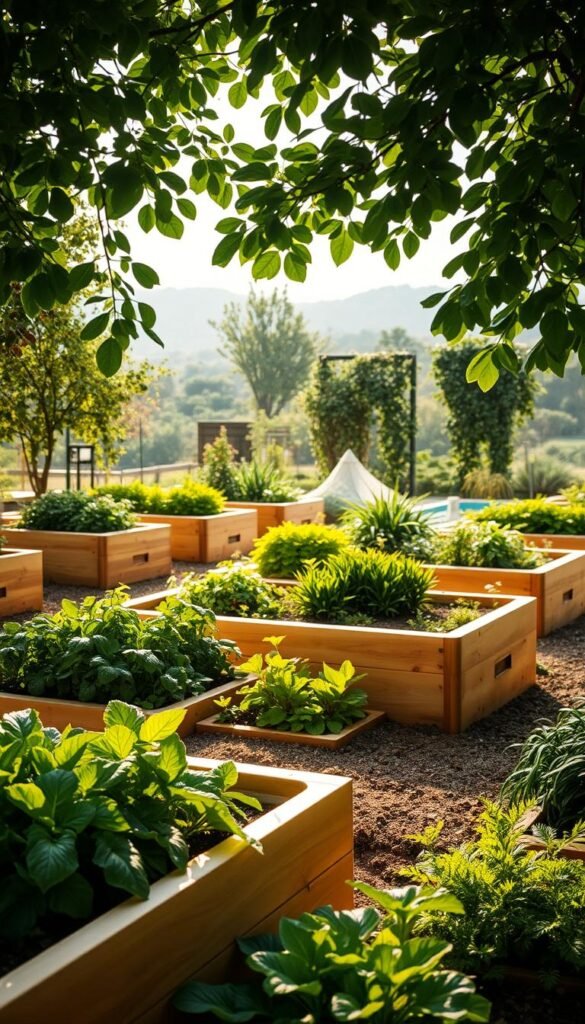
Transform your planting areas into spaces that work with your body, not against them. Smart height adjustments turn routine tasks into comfortable activities, letting you focus on growth rather than aches.
Adjusting Bed Height for Comfort
Your elbows hold the secret. Ideal planting surfaces sit 6-12″ below elbow level when standing. For most adults, this means 30-36″ tall beds. Wheelchair users often prefer 24-28″ heights for easy access.
| User Height | Recommended Bed Height | Mobility Notes |
|---|---|---|
| Under 5’4″ | 28-32″ | Add 4″ for seated work |
| 5’4″-6′ | 32-36″ | Standard standing height |
| Over 6′ | 36-42″ | Prevents excessive bending |
Reducing Back Strain While Gardening
Keep beds narrow enough to reach the center without stretching. A 3-foot width lets most people access plants from both sides. Pair this with vertical planters for herbs or flowers to save space.
One gardener shared: “I added casters to my 34-inch beds—now I rotate them like office chairs!” Retrofit existing setups with stacked lumber or cinder blocks. For new installations, consider L-shaped layouts that wrap around seating areas.
Remember: depth matters too. Shallow 8-inch beds suit strawberries, while 18-inch depths accommodate carrots. Match your crops to your comfort—your body will thank you after harvest season.
Creative Material Choices for Your Raised Beds
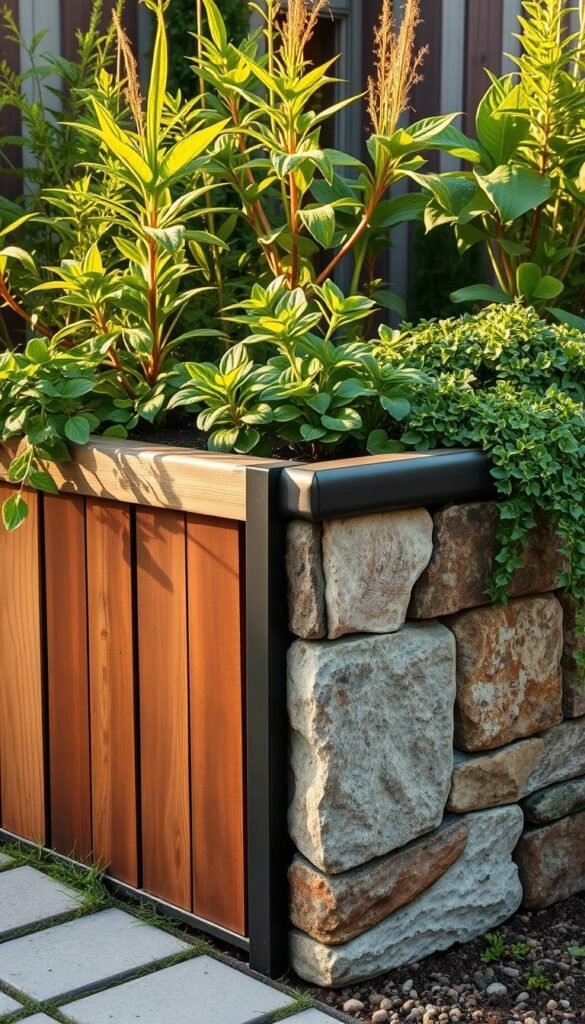
Your planting boxes’ materials shape both their look and lifespan. Whether you prefer earthy warmth or industrial edge, options abound to suit your taste and budget. Let’s break down what works best for different settings.
Wood, Brick, and Metal Comparisons
Cedar and redwood remain popular for their natural decay resistance. These woods blend beautifully with traditional homes but require replacement every 5-8 years. For modern spaces, galvanized steel troughs offer instant planters that withstand decades of use.
| Material | Cost (per 4×4 ft) | Lifespan | Best For |
|---|---|---|---|
| Cedar | $80-$120 | 5-8 years | Rustic charm |
| Corten steel | $250-$400 | 20+ years | Modern aesthetics |
| Recycled brick | $150-$300 | Lifetime | Traditional homes |
Salvaged materials like old barn wood or shipping containers create unique, eco-friendly planters. One gardener transformed discarded factory pipes into sleek metal beds that became neighborhood conversation starters.
Enhancing Curb Appeal with Consistent Materials
Match your boxes to existing hardscape features. A brick patio? Build matching raised beds using leftover materials. For homes with black window trim, try dark-stained cedar or powder-coated metal frames.
Prefab troughs simplify installations while maintaining style. Check out these creative material combinations for inspiration. If you’re working with limited funds, our guide to budget-friendly installations shows how to mix materials without clashing.
Remember: heat retention varies. Dark metals warm soil faster in spring—perfect for tomatoes. Lighter woods keep roots cooler for lettuce. Choose wisely, and your boxes will serve both beauty and purpose.
Incorporating Vertical Elements: Trellises and Arches
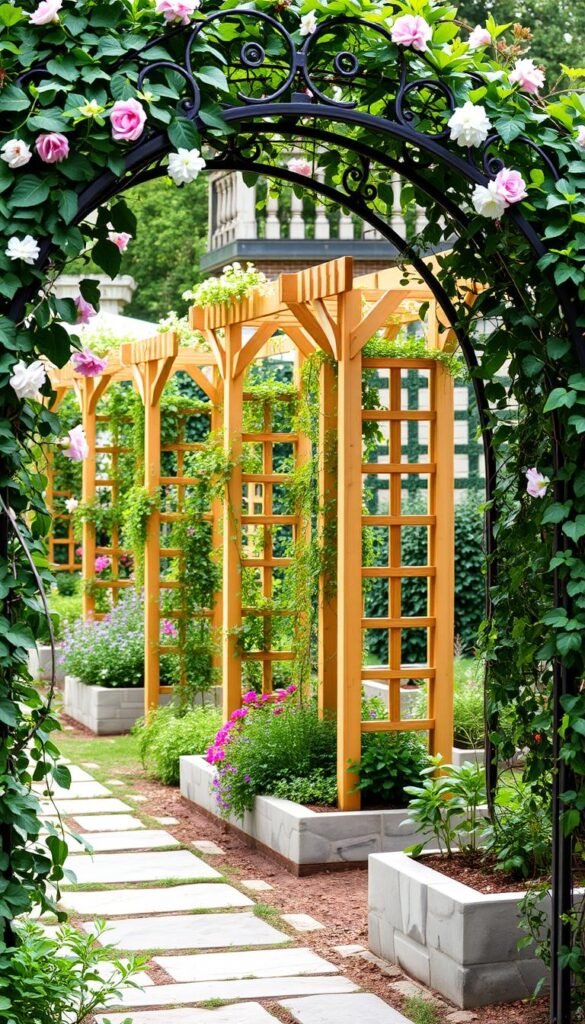
What if your growing space could reach new heights? Vertical structures transform flat layouts into dynamic living walls. They add dimension while saving precious ground area—perfect for urban settings or small plots.
Using Trellises for Climbing Plants
Teepee frames make playful supports for beans and sweet peas. Position them along borders to create natural dividers. Metal grids work well for heavy producers like cucumbers—their broad leaves will hide the framework by midsummer.
Consider sunlight patterns when placing structures. A north-facing trellis won’t shade sun-loving tomatoes. For shady spots, try climbing hydrangeas or ivy. One gardener noted: “My morning glories on an east wall bloom two weeks earlier than ground-planted ones!”
Designing Attractive Garden Arches
Arches serve dual purposes—they guide movement and showcase blooms. Install them over pathways and train roses or clematis to frame the view. Powder-coated steel withstands weather, while cedar blends with natural surroundings.
| Plant Type | Best Support | Seasonal Impact |
|---|---|---|
| Peas | Mesh netting | Spring harvest |
| Grapes | Wooden pergola | Year-round structure |
| Passionflower | Metal arch | Summer blooms |
For continuous color, pair early-blooming wisteria with late-season nasturtiums. Maintain structures by checking for loose screws before growth surges. Want more inspiration? Explore our guide to vertical gardening setups that maximize both style and yield.
Planning Pathways and Layout Strategies for Easy Access
Smart pathway planning transforms how you interact with your growing spaces. Well-designed walkways let you tend plants comfortably while adding structure to your landscape. Let’s explore how to balance practicality with visual appeal.
Material Choices That Work Hard
Brick and stone pavers outperform gravel by staying put underfoot. Their flat surfaces handle wheelbarrows without shifting, while gaps between stones allow water drainage. Compare popular options:
| Material | Cost per Sq Ft | Durability | Maintenance |
|---|---|---|---|
| Clay Brick | $8-$12 | 25+ years | Low |
| Concrete Pavers | $5-$10 | 20 years | Medium |
| Flagstone | $15-$30 | Lifetime | Low |
| Gravel | $1-$3 | 5 years | High |
Three-foot paths give ample room for kneeling or moving supplies. Narrower 18-inch walkways work well between beds in tight areas. For wheelchair access, expand to 48 inches.
Orientation matters more than you think. Aligning beds north-south ensures even sun exposure. One gardener reported “My kale grows twice as fast since I rotated my layout!”
Add charm with curved borders or solar lights along edges. Stepping stones break up long stretches, creating visual rhythm. These touches turn functional areas into inviting garden features that shine after sunset.
Designing Raised Beds for Different Plant Types
What if your growing setup could adapt to each plant’s needs? Customizing your layout lets you maximize yields while creating visual harmony. Start by matching soil depth to root systems—this simple trick transforms how your greens and veggies thrive.
Tailoring Depth for Root Growth
Soil depth determines success for every crop. Carrots and parsnips need 12-18 inches of loose earth to stretch downward. Leafy greens like spinach flourish in just 6-8 inches. Use this quick guide:
| Plant Type | Minimum Depth | Ideal Soil Mix |
|---|---|---|
| Tomatoes | 12″ | Compost + perlite |
| Strawberries | 8″ | Peat + vermiculite |
| Radishes | 10″ | Sand + organic matter |
Build tiered systems for mixed plantings. Deeper sections accommodate root veggies, while shallow zones host herbs. One gardener reported: “My kale grew 30% larger after I doubled my bed’s depth!”
Mixing Vining and Bush Plants
Pair upward climbers with compact growers to save space. Train tomatoes on cages behind low-growing peppers—their roots won’t compete. Cucumbers spilling over edges create living decor while keeping fruits clean.
- Use north-facing edges for tall plants
- Interplant marigolds with squash to deter pests
- Rotate crops seasonally to maintain soil nutrients
Remember: indeterminate varieties need sturdy supports. Add trellises during bed construction for stability. With smart pairings, you’ll harvest more from every square foot while creating eye-catching displays.
DIY Raised Bed Ideas for Compact Spaces
Struggling to grow in tight quarters? Geometric planters unlock fresh possibilities for small patios, balconies, and narrow side yards. Triangular layouts maximize every inch while adding artistic flair to your setup.
Triangular Raised Garden Designs
Three-sided planters fit snugly into corners or along fences. Build them from cedar planks or repurpose old crates. A 3-foot triangle holds 40% more soil than square boxes of similar footprint.
Smart arrangements prevent overcrowding:
- Place tall herbs like rosemary at the narrowest point
- Let trailing strawberries spill over edges
- Alternate colors for visual pop—purple basil beside golden marigolds
| Container Size | Soil Depth | Best Plants |
|---|---|---|
| 24″ sides | 10″ | Lettuce, radishes |
| 36″ sides | 14″ | Peppers, bush beans |
| 48″ sides | 18″ | Tomatoes, zucchini |
Stack multiple tiers for vertical impact. Use the bottom layer for deep-rooted carrots, upper levels for shallow greens. One urban gardener reported: “My 4-tier system produces enough salad greens for three households!”
Calculate soil needs using this formula: (Length x Width x Height) / 2 for triangular boxes. Add drainage holes every 6 inches when repurposing buckets or storage bins. Match container colors to your outdoor decor for a polished look that disguises limited spaces.
Integrating Raised Beds with Your Landscape and Hardscape
Unify your yard’s aesthetic by connecting planters with permanent structures. When stone steps meet tiered planting areas, you create visual flow that guides the eye through your space. This approach transforms functional zones into artistic statements that complement your property’s architecture.
Coordinating Stone Steps and Material Choices
Natural stone brings timeless elegance to outdoor spaces. Use matching flagstone for both pathways and planter edging to create continuity. Popular options include:
| Material | Durability | Cost per Sq Ft |
|---|---|---|
| Bluestone | 50+ years | $12-$18 |
| Limestone | 30 years | $8-$14 |
| Fieldstone | Lifetime | $6-$10 |
Sloped yards benefit from terraced layouts. Retaining walls double as seating areas when capped with flat stones. One landscaper noted: “Clients love how integrated stonework reduces maintenance while boosting property value.”
Matching Raised Beds with Home Exteriors
Your planters should echo your house’s character. For brick facades, try clay-toned concrete blocks. Modern stucco homes pair well with smooth corten steel. Three simple alignment tips:
- Repeat shutter colors in planter accents
- Mirror roof angles in trellis designs
- Use mulch that complements driveway gravel
Create transitions between zones with low hedges or ornamental grasses. These soft borders maintain openness while defining areas for growing and gathering.
Plan for future expansions by leaving access points for irrigation lines. As your needs evolve, cohesive material choices ensure additions feel intentional rather than afterthoughts. This strategic approach keeps your outdoor space both functional and magazine-ready for years.
Enhancing Garden Aesthetics with Colorful Planters and Lighting
Your outdoor space becomes an extension of your living area when you blend practical growing with artistic touches. Thoughtful accents turn functional zones into inviting retreats that shine day and night.
Outdoor Lighting to Highlight Your Garden
String lights add magic after sunset. Drape them over pergolas or wrap around trellises to create cozy nooks for evening gatherings. Solar-powered path markers guide visitors while showcasing herbs and flowers along walkways.
Spotlights emphasize texture and color. Angle them upward to cast dramatic shadows from ornamental grasses. One homeowner reported: “Uplighting my rosemary hedge tripled its visual impact!”
Selecting Stylish Metal Planters
Powder-coated metal planters withstand weather while elevating your decor. Sage green units make leafy greens pop, while white versions let vibrant petunias take center stage. Their lightweight design allows easy rearrangement as seasons change.
Pair rectangular troughs with angular architecture, or use circular containers to soften concrete patios. These versatile vessels work equally well for herbs on balconies or flowering shrubs in sprawling yards. Just ensure drainage holes prevent waterlogging.
With strategic lighting and material choices, your growing space becomes a dynamic backdrop for both relaxation and cultivation. Every detail contributes to an environment that nourishes plants and pleases the eye.

